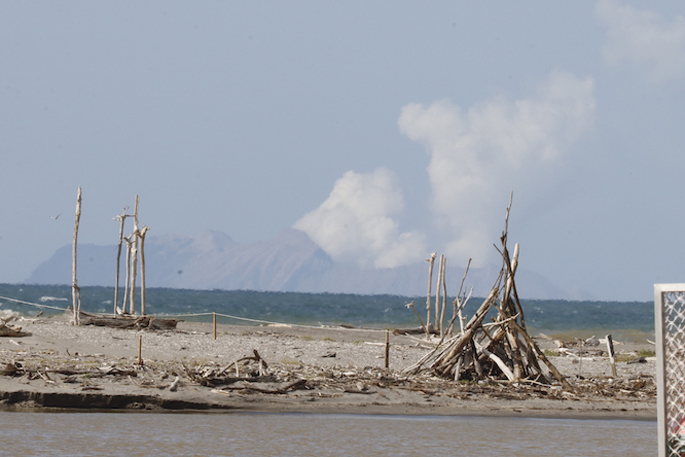New observations in July continue to indicate low levels of volcanic activity at Whakaari/White Island.
The Volcanic Alert Level remains at 1, says duty volcanologist Craig Miller.
"Minor volcanic unrest continues at Whakaari/White Island. Temperatures in the active vents are high and volcanic gases continue to be emitted at moderate rates similar to those measured since May 2020.
"During fine weather conditions this will generate moderate to large steam plumes above the island."
An observation flight last week showed temperatures remain high at around 540°C in the active vent area.
These have reduced from over 740°C measured in February and indicate a slowly cooling active vent area.
The latest gas flight was made in mid-July and regular measurements since May confirm moderate amounts of gas (200 to 300 tonnes per day SO2, 20 to 40 tonnes per day H2S and 1500 to 2000 tonnes per day CO2) continue to be emitted from the active vents, says Craig.
"These are at similar rates to those measured between eruptive episodes over the last decade.
"Measurements of SO2 gas from instruments on the island have also recorded levels of SO2 like those previously seen between eruptive periods."
Deformation data obtained from satellite-based technology in the past month indicate continued subsidence around the active vent area as well as ongoing subsidence of the main crater wall, south and west of the active vents.
In July, the level of volcanic seismic tremor has remained generally low, aside from two short duration bursts of moderate volcanic tremor earlier in the month.
Craig says recent rainfall has created small ponds of water on the crater floor. However, these do not appear to be encroaching into hot vent areas.
"All observations over the past month indicate that the volcano remains in minor volcanic unrest and at Volcanic Alert Level 1.
"The Volcanic Alert Level reflects the current level of volcanic unrest or activity and is not a forecast of future activity.
"Although current indications are that activity is decreasing, an eruption could still occur with little or no warning.
"The main plausible triggers for a sudden eruption remain the collapse of unstable material from the crater walls onto the vents, increased release of gas from the shallow magma, and the ingress of water underground onto the shallow magma body."
Should any explosive activity produce an ash cloud, the likelihood of ash affecting the mainland remains very low.
"Under suitable weather conditions, the gas and steam plume may be noticed on the mainland as weak acid rain.
"Volcanic Alert Level 1 indicates the primary hazards are those expected during volcanic unrest; steam discharge, volcanic gas, earthquakes, landslides and hydrothermal activity. While Volcano Alert Level 1 is mostly associated with environmental hazards, eruptions can still occur with little or no warning.
"GNS Science and our National Geohazards Monitoring Centre continue to continuously closely monitor Whakaari/White Island for changes in activity. Further updates will be provided as needed."
The Volcanic Alert Level remains at Level 1. The Aviation Colour Code remains at Green.



1 comment
volcano
Posted on 03-08-2020 12:05 | By dumbkof2
mabee the volcano gods are saying we don't want visitors
Leave a Comment
You must be logged in to make a comment.